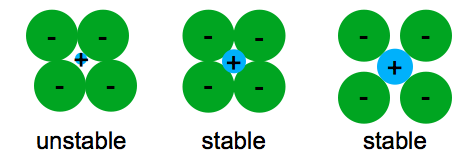Ceramics Can Have The Following Bond Type Or Types
Thirdly it turns out to form stable structures it is necessary to maximize the number of oppositely charged ion neighbors as shown in the figure below.
Ceramics can have the following bond type or types. The resulting atoms are oppositely charged and attract each other resulting in an ionic bond. Modern ceramics include some of the strongest known materials. Some elements such as carbon or silicon may be considered ceramics ceramic materials are brittle hard strong in compression and weak in shearing and tension. Although both types of bonds occur between atoms in ceramic materials in most of them particularly the oxides the ionic bond is predominant.
This predates the use of metal. The properties of ceramic materials like all materials are dictated by the types of atoms present the types of bonding between the atoms and the way the atoms are packed together. In the first one the metal cations are surrounded by electrons that can move freely between atoms. Usually they are metal oxides that is compounds of metallic elements and oxygen but many ceramics.
The type of bond view the full answer. Ceramic composition and properties atomic and molecular nature of ceramic materials and their resulting characteristics and performance in industrial applications. Ionic bonding involves the exchange of electrons between atoms to complete shells either by adding or giving up electrons. Humans have produced ceramics since at least 24 000 bc.
This is known as the atomic scale structure. Ceramics are commonly used in construction consumer products vehicles scientific and industrial equipment. Industrial ceramics are commonly understood to be all industrially used materials that are inorganic nonmetallic solids. A ceramic material is an inorganic non metallic often crystalline oxide nitride or carbide material.
First ionic bonds in solids are quite directional i e there are certain preferred angles. Metallic and the van der waals. What is a ceramic. There are two other types of atomic bonds.
Most ceramics are made up of two or more elements. They withstand chemical erosion that occurs in other materials subjected to acidic or caustic environments. The properties of ceramic materials like all materials are dictated by the types of atoms present the types of bonding between the atoms and the way the atoms are packed together.






/hands-of-male-potter-holding-finished-vase-in-workshop-665479463-596284a15f9b583f180d5a3c.jpg)








































